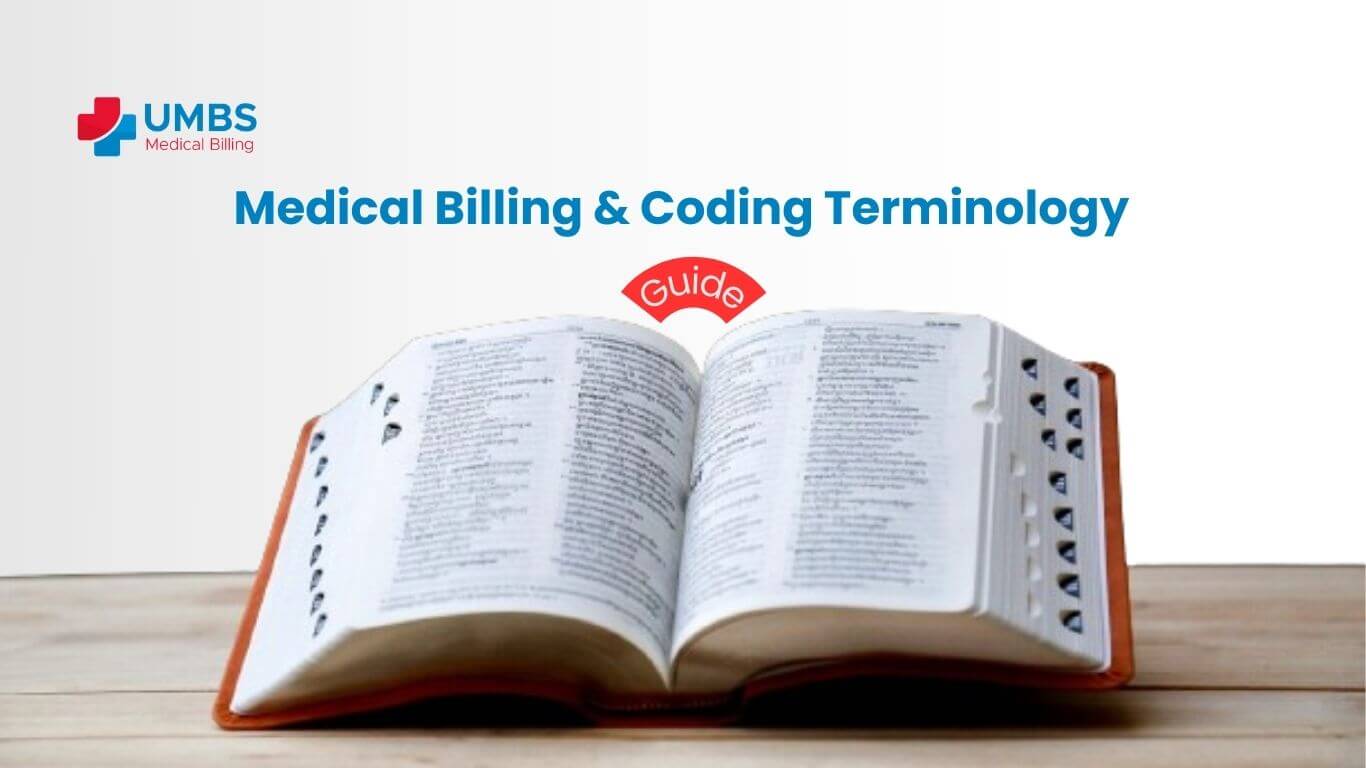Our beginner’s guide provides an overview of essential medical billing and coding terms, covering both terminology and common abbreviations and acronyms utilized in the field.
In the healthcare industry, medical billing and coding are indispensable. These processes facilitate hospitals and doctors’ offices in requesting payment for their services. If you’re considering entering this field, you’ve likely encountered numerous medical billing and coding terms. But what do they signify, and how do they correlate with the job at hand?
Medical Billing Terms for Billers and Coders
Billers and coders must master medical billing and coding terms. Each term, from CPT codes to EOBs, plays a crucial role in accurately processing claims and ensuring proper reimbursement for medical services. Staying updated on industry-specific terms and regulations is key to maintaining compliance and optimizing revenue flow within healthcare organizations.
Advanced Beneficiary Notice (ABN)
Advanced Beneficiary Notice (ABN) is a document informing you that certain tests ordered by your doctor may not be covered by Medicare. It serves to alert you beforehand about potential uncovered services and informs you that you will be responsible for paying for these charges.
Applied to Deductible (ATD):
In medical billing, Applied to Deductible (ATD) occurs when insurance companies credit payments towards a patient’s deductible before covering healthcare service costs. After the deductible is met, the insurer typically starts covering a portion or all of the remaining medical expenses based on the insurance plan’s terms.
The deductible is the initial amount a patient pays out of pocket before their insurance coverage begins. Look for this information on your insurance statement.
Assignment of Benefits (AOB):
AOB is crucial, especially for insurance payments, as it involves directly transferring a patient’s insurance benefits to the healthcare provider for services rendered. When a patient signs an AOB form, they essentially authorize their insurance company to pay the provider directly for the medical services received.
Aging Bucket (AR Aging):
Managed outstanding insurance claims and overdue patient balances for more than 30 days, ensuring timely resolution and improved revenue flow.
Allowed Amount:
The maximum amount an insurance company permits a healthcare provider to charge for a covered medical service. This cost could be covered by the insurance, paid by the patient, or shared between them, depending on the patient’s coverage.
HIPAA:
Since 1996, the Health Insurance Portability and Accountability Act (HIPAA) has been a federal law. It ensures confidentiality, integrity, and availability in three key areas. HIPAA safeguards the privacy of identifiable protected health information (PHI), secures health and PHI electronically and physically, and streamlines billing and electronic transactions.
Revenue Cycle Management (RCM):
The Revenue Cycle Management (RCM) system oversees various financial tasks like provider credentialing, enrollment, eligibility verification, claims processing, payment posting, and revenue generation. RCM and optometric billing services collaborate with your medical clearinghouse to streamline administrative and clinical functions, making it easier to capture, manage, and collect patient service revenue.
Credentialing:
Credentialing entails collecting and verifying a doctor’s professional background and educational history, ensuring that healthcare providers possess the required licenses, certifications, and skills to treat patients. In the realm of insurance plans, credentialing is frequently referred to as “joining insurance panels.”
Eligibility:
Verifies insurance information for accuracy and calculates potential patient expenses like co-pays, co-insurance, and deductibles. Offering precise cost estimates to patients can greatly enhance their satisfaction and prevent future claim rejections.
Adjudication:
After the insurance payer receives a medical claim, they undergo a decision-making process to assess whether to accept, deny, or reject it. This involves evaluating the claim for validity and compliance, and determining the reimbursement amount for the provider.
Authorization:
A prior authorization is necessary from the insurance payer before a patient can receive specific treatments or services.
Authorization Number:
A code indicating that the treatment or service has been approved by the patient’s insurance plan. This code is used by United Medical Billing Solutions.
Code Bundling:
In code bundling, healthcare providers group multiple healthcare services or procedures under a single billing code, rather than billing each one separately. This practice is common when providers frequently perform these services together or consider them integral components of a larger procedure.
Claim:
The information billed to the insurance company pertains to the services rendered.
Claim Adjustment Reason Codes (CARCs):
Reason codes clarify why the payment was adjusted and detail why the claim or service line received a different payment than what was initially billed. This information helps understand the billing process.
Charge Entry:
The process involves accurately entering medical billing information and assigning diagnosis and procedure codes to file a medical claim. This service is provided by United Medical Billing Solutions.
Claim Scrubbing:
A method to guarantee that medical claims are accurate and error-free prior to submission.
CMS-1500 02/12 Form:
A medical claim form approved by the Centers for Medicare and Medicaid Services (CMS) is utilized for submitting claims to insurance payers. The form’s distinct feature is its red ink. It’s also known as a (Health Care Financing Administration) HCFA Form.
Co-pay:
An individuals pay a fixed amount, known as a co-pay, out of pocket for covered healthcare services or medications. This payment is made at the time of service and is distinct from deductibles or coinsurance. Co-pays differ based on service type and insurance terms, facilitating cost-sharing between individuals and insurers.
Current Procedural Terminology (CPT Code):
In 1966, the American Medical Association introduced CPT® codes to label medical, surgical, or diagnostic procedures performed by doctors and healthcare providers. These codes ensure consistency and are vital for billing medical insurance companies. Annually, the AMA updates the CPT® code set.
Published by the AMA, CPT® codes include different categories of five-digit codes and two-character modifiers, detailing any modifications to the procedure. While most codes are numeric, some are alphanumeric, with a fifth character possibly being A, F, T, or U.
Date of Service (DOS):
Treatment date.
Diagnosis Code (ICD-10):
The ICD-10-CM diagnosis code is a medical code used to describe a patient’s condition or diagnosis, while the ICD-10-PCS code is used for inpatient procedures. The diagnosis code helps insurance payers understand the reason behind the provided service.
Denied Claim:
A denied claim has gone through the adjudication process, where the insurance company or third-party payer has received and reviewed the claim. Despite being denied initially, it’s important to note that you still have the option to appeal the decision. Just because a payer denies a claim doesn’t necessarily mean it’s not eligible for payment.
Electronic Claim 837P Transaction:
The standardized electronic format used in medical billing to submit healthcare claims for professional services rendered by healthcare providers, such as physicians, therapists, or other licensed professionals, is an Electronic Claim 837P Transaction. Defined by the American National Standards Institute (ANSI), this format facilitates the exchange of claim information between healthcare providers and insurance payers.
EDI Enrollment:
Signing up with a clearinghouse and individual payers to send electronic claims is called enrollment. When you’re establishing a billing system, you need to enroll with your chosen clearinghouse. Each clearinghouse provides a unique submitter and receiver ID, which lets you send and receive payments associated with your Tax ID.
Electronic Data Interchange (EDI):
A connection between your billing system and the insurance company, which handles the transfer of claim data to different insurance payers.
Electronic Funds Transfer (EFT):
Direct deposit and insurance claim payments are automatically sent to your bank account. Many insurance companies now mandate that providers receive Electronic Funds Transfer (EFT) payments to stay in line with provider network requirements.
Electronic Remittance Advice (ERA):
An electronic exchange of data known as Electronic Remittance Advice (ERA) or electronic transaction that offers details about claims. ERAs are frequently utilized to automatically post claim payments into the billing system.
HCPCS Codes:
HCPCS are standardized codes with five characters, mixing letters and numbers. They’re used to bill Medicare and Medicaid patients for services, procedures, and equipment not covered by CPT® codes. The Centers for Medicare and Medicaid Services (CMS) oversee these billing codes.
ICD-10 Codes:
The International Classification of Diseases Tenth Revision, known as ICD-10-CM for patient conditions and diagnoses, and ICD-10-PCS for inpatient procedures, are medical codes. These codes help describe a patient’s condition or the procedures they undergo. When you provide a service, the diagnosis code explains to the insurance company why the service was necessary.
Provider Enrollment:
Signing up a healthcare provider with commercial or government health insurance plans so they can get reimbursed for the services they provide to patients.
Remittance Advice Remark Codes (RARCs):
Remark Codes are used to offer further clarification for an adjustment already indicated by a Claim Adjustment Reason Code, or to convey details about remittance processing.
Also Read: Why Medical Billing Requires Payment Posting
Conclusion
In conclusion, if you’re feeling overwhelmed by paperwork or encountering obstacles with optometry medical and vision plan billing, don’t worry—we’re here to assist you. Our extensive glossary of medical billing and coding terms is crafted to aid you in boosting collections, minimizing rejected and denied claims, and ultimately, boosting revenue for your eye care business.
By utilizing this knowledge and adopting more efficient billing practices, you can streamline your operations, improve revenue cycle management, and concentrate on providing outstanding care to your patients. With our support, you can overcome billing hurdles and attain greater success in your eye care practice.






